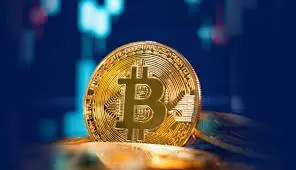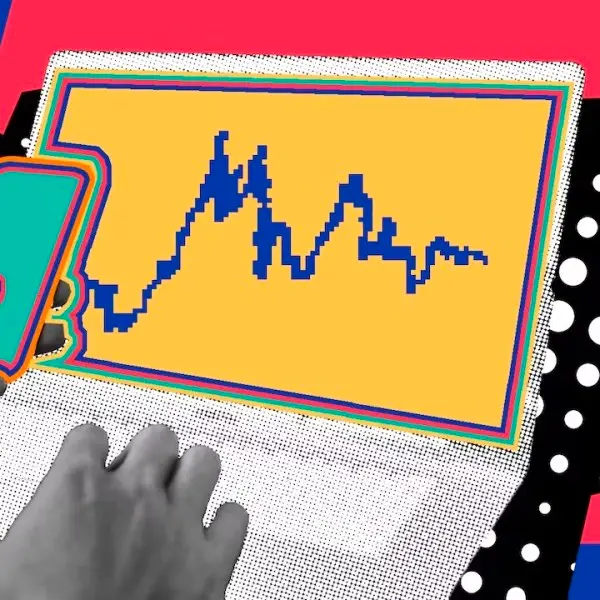Grayscale Report: Limited Upside After Approval of Ethereum Spot ETF, Solana May Capture Market Share
Author: Grayscale Research
Compiled by: Felix, PANews
- The potential launch of a spot Ethereum ETF will introduce more investors to the concepts of smart contracts and decentralized applications, thereby helping them understand the potential of public blockchains to transform digital commerce.
- Ethereum is the largest blockchain network in terms of users and applications, expanding with a modular design approach, with more activities expected to occur on Layer 2 networks in the future. To maintain its dominant position in a competitive niche, Ethereum needs to attract more users and increase fee revenue.
- According to international precedents, the demand for a spot Ethereum ETF in the U.S. is expected to be about 25%-30% of the demand for a spot Bitcoin ETF. A significant portion of Ethereum's supply (e.g., staked ETH) is unlikely to be available for the ETF.
- Given the high initial valuation, there may be limited room for further price increases compared to the Bitcoin ETF launching in January 2024, but Grayscale Research remains optimistic about the prospects for both assets.
Last week, the U.S. Securities and Exchange Commission (SEC) approved the 19b-4 forms submitted by several issuers for spot Ethereum ETFs, marking significant progress for these products to be listed on U.S. exchanges. Similar to the spot Bitcoin ETF launched in January, these new products will provide broader access to crypto assets for investors. While both assets are based on the same public blockchain technology, Ethereum is an independent network with different use cases (Table 1), whereas Bitcoin primarily serves as a store of value and a digital alternative to gold. Ethereum is a decentralized computing platform with a rich ecosystem of applications, often likened to a decentralized app store. New investors interested in exploring this asset may need to consider Ethereum's unique fundamentals, competitive positioning, and potential role in the growth of blockchain-based digital commerce.

Chart 1: Ethereum as a Smart Contract Platform Blockchain
Basics of Smart Contracts
Ethereum expands on Bitcoin's original vision by adding smart contracts. Smart contracts are pre-programmed and automatically executed pieces of computer code. When users interact with a smart contract, predefined actions are executed without any additional input. It's like a vending machine: when a user inserts a coin, the vending machine dispenses a product. When using a smart contract, users "insert" digital tokens, and the software can perform various operations, such as token trading, loan issuance, and verifying a user's digital identity.
Smart contracts operate through the mechanisms of the Ethereum blockchain. In addition to recording ownership of assets, the block-by-block updates of the blockchain can also record any changes in "state" (a computer science term referring to the state of data in a database). In this way, combined with smart contracts, public blockchains can effectively operate like a computer (software computer rather than hardware computer). With this capability, Ethereum and other smart contract platform blockchains can support nearly any type of application and serve as core infrastructure for the emerging digital economy.
Asset Returns and Fundamentals
Since the beginning of 2023, ETH has generally performed in line with the overall performance of tokens in the smart contract platform segment (Table 2). However, ETH has underperformed compared to BTC and Solana. Since the start of 2023, both ETH and BTC have outperformed certain traditional asset classes on a risk-adjusted basis. In the long term, despite significantly higher volatility, both BTC and ETH have achieved risk-adjusted returns comparable to traditional asset classes.

Figure 2: ETH's performance has remained consistent with the cryptocurrency sector
Through Ethereum's modular design, different types of blockchain infrastructure work together to provide a good experience for end users. In particular, as activity on Ethereum's Layer 2 networks increases, the ecosystem expands. Layer 2 regularly settles and publishes its transaction records to Layer 1, benefiting from its network security and decentralization. This approach contrasts sharply with single-layer design blockchains (like Solana), where all critical operations (execution, settlement, consensus, and data availability) occur on Layer 1.
In March 2024, Ethereum underwent a significant upgrade, expected to facilitate its transition to a modular network architecture. From the perspective of blockchain activity, the upgrade has been successful: the number of active addresses on Layer 2 networks has significantly increased, accounting for about two-thirds of total activity in the Ethereum ecosystem (Figure 3).

Figure 3: Significant Growth in Ethereum Layer 2 Activity
Meanwhile, the shift to Layer 2 networks has also impacted the token economics of ETH, at least in the short term. Smart contract platform blockchains primarily accumulate value through transaction fees, which are typically paid to validators or used to reduce token supply. In the Ethereum network, base transaction fees are burned (removed from circulation), while priority fees ("tips") are paid to validators. When Ethereum's transaction revenue is relatively high, the number of tokens burned exceeds the rate of new issuance, leading to a decrease in total ETH supply (deflation). However, as network activity transitions to Layer 2, fee revenue on the Ethereum mainnet declines, and the supply of ETH begins to increase again (Figure 4). Although Layer 2 networks also pay fees to publish their data to Layer 1 (the so-called "blob fees," along with other transaction fees), these amounts are often relatively low.

Figure 4: Recent Increase in ETH Supply Due to Lower Mainnet Fees
For ETH to appreciate over time, the Ethereum mainnet will likely need to increase fee revenue. This could be achieved in two ways:
- Moderately increasing Layer 1 activity, leading to higher transaction fees
- Significantly increasing Layer 2 activity, leading to lower transaction fees
Grayscale Research expects a combination of both approaches is more likely.
Grayscale believes that growth in Layer 1 activity is most likely to come from low-frequency, high-value transactions, as well as any transactions that require a high degree of decentralization (at least until Layer 2 networks are sufficiently decentralized). This could include many types of tokenization projects, where the transaction costs may be relatively low compared to the dollar value of the transaction. Currently, about 70% of tokenized U.S. Treasury bonds are on the Ethereum blockchain (Table 5). In Grayscale's view, relatively high-value NFTs may also remain on the Ethereum mainnet, as they benefit from its high security and decentralization and are less frequently traded (for similar reasons, Bitcoin NFTs are expected to continue growing).

Figure 5: Ethereum Hosts Most Tokenized Treasury Bonds
In contrast, relatively high-frequency and/or low-value transactions will occur more on Ethereum's various Layer 2 networks. For example, social media applications have seen various successful cases on Ethereum Layer 2 recently, including friend.tech (Base), Farcaster (OP Mainnet), and Fantasy Top (Blast). In Grayscale's view, gaming and retail payments may require very low transaction costs and are more likely to migrate to Layer 2 networks. However, it is important to note that due to the lower transaction costs, these applications need to attract a large number of users to significantly increase fee revenue on the Ethereum mainnet.
Potential Impact of the U.S. Spot Ethereum ETF
In the long run, the market capitalization of ETH should reflect its fee revenue and other fundamentals. However, in the short term, the market price of ETH may be influenced by changes in supply and demand. While the approval of the U.S. spot Ethereum ETF has made progress, issuers of the ETF will need to wait for the S-1 registration statement to become effective before they can begin trading. A full approval and launch of trading for these products could bring new demand, as these assets will be accessible to a broader range of investors. Considering the supply and demand dynamics, Grayscale Research expects that access to Ethereum and the Ethereum protocol through the ETF will increase, which will help drive demand and subsequently raise the token's price.
Outside the U.S., Bitcoin and Ethereum exchange-traded products (ETPs) have already been listed, with assets in Ethereum ETPs accounting for about 25%-30% of Bitcoin ETP assets (Table 6). Based on this, Grayscale Research predicts that net inflows into the spot Ethereum ETF listed in the U.S. will reach 25%-30% of the net inflows of the spot Bitcoin ETF to date; or approximately $3.5 billion to $4 billion over the first four months (25%-30% of the $13.7 billion net inflow since January for the spot Bitcoin ETF). Ethereum's market capitalization is about one-third (33%) of Bitcoin's market capitalization, so Grayscale's assumption implies that the share of net inflows for Ethereum may be slightly smaller relative to its market cap. However, this is just an assumption, and there is uncertainty regarding higher or lower net inflows for the spot Ethereum ETF listed in the U.S. Notably, in the U.S. market, ETH futures ETFs account for only about 5% of BTC futures ETF assets, although this does not represent the potential demand for a spot ETH ETF.

Figure 6: Outside the U.S., Ethereum ETP assets account for 25%-30% of Bitcoin ETP assets
Regarding ETH supply, Grayscale Research believes that approximately 17% of ETH can be classified as idle or relatively illiquid. According to data analytics platform Allium, about 6% of the ETH supply has not moved for over five years, and approximately 11% of the ETH supply is "locked" in various smart contracts (e.g., bridges, wrapped ETH, and various other applications). Additionally, 27% of the ETH supply is staked. Recently, issuers of spot Ethereum ETFs, including Grayscale, have removed references to staking from public documents, indicating that the U.S. SEC may allow ETFs to trade without staking. Therefore, this portion of the supply is unlikely to be available for ETF purchases.
Aside from these categories, the annual value of ETH used for network transactions is $2.8 billion. At current ETH prices, this represents an additional 0.6% of the supply. Some protocols hold large amounts of ETH in their treasuries, including the Ethereum Foundation (ETH worth $1.2 billion), Mantle (approximately $879 million in ETH), and Golem (approximately $995 million in ETH). Overall, ETH in protocol treasuries accounts for about 0.7% of the supply. Finally, approximately 4 million ETH, or 3% of the total supply, is held by ETH ETPs.
Overall, these categories account for about 50% of the ETH supply, although there is some overlap (e.g., ETH in protocol treasuries may be staked) (Figure 7). Grayscale believes that net purchases of ETH are more likely to come from the remaining circulating supply. Since existing uses limit the available supply for new spot ETF products, any increase in demand could have a significant impact on price.

Figure 7: A significant portion of ETH supply is unavailable for new spot ETFs
From a valuation perspective, Ethereum's valuation can be said to be higher than Bitcoin's at the time of the spot Bitcoin ETF launch in January. For example, a popular valuation metric is the MVRV z-score. This metric is based on the ratio of the token's total market capitalization to its "realized value": the market cap based on the last price at which the token moved on-chain (rather than the price traded on exchanges). In January of this year, when the spot Bitcoin ETF launched, its MVRV z-score was relatively low, indicating moderate valuation and potentially greater room for price increases. Since then, the crypto market has appreciated, and both Bitcoin and Ethereum's MVRV ratios have increased (Table 8). This may suggest that, compared to the approval of the U.S. spot Bitcoin ETF in January, there may be less room for price increases following the approval of the spot ETH ETF.

Figure 8: At the time of the spot Bitcoin ETF launch, Ethereum's valuation metric was higher than Bitcoin's
Finally, native crypto investors may focus on the impact of the spot Ethereum ETF on smart contract platform tokens, particularly the SOL/ETH price ratio. Solana is the second-largest asset in this segment (by market cap). Grayscale Research believes that, in the long run, Solana is currently most likely to capture market share from Ethereum. Solana has significantly outperformed Ethereum over the past year, and the SOL/ETH price ratio is now close to the peak of the last crypto bull market (Figure 9). Part of the reason may be that, despite being affected by the FTX incident (in terms of token ownership and development activity), the user and developer community of the Solana network continues to grow its ecosystem. More importantly, Solana has also driven increased transaction activity and fee revenue through a "smooth" user experience. In the short term, Grayscale expects the SOL/ETH price ratio to stabilize, as inflows from the Ethereum ETF will support ETH prices. However, in the long run, the SOL/ETH price ratio is likely to be determined by the fee revenue of both chains.

Figure 9: The SOL/ETH price ratio is approaching the previous cycle's peak
Looking Ahead
While the launch of a spot ETH ETF in the U.S. market may have a direct impact on ETH valuations, the effects of regulatory approval extend far beyond price. Ethereum provides an alternative framework for digital commerce based on decentralized networks. While traditional online experiences are quite good, public blockchains may offer more possibilities, including near-instant cross-border payments, true digital ownership, and interoperable applications. Although other smart contract platforms can also provide this utility, the Ethereum ecosystem has the most users, the most decentralized applications, and the deepest pools of capital. Grayscale Research expects that new spot ETFs can popularize this transformative technology among a broader range of investors and other observers, contributing to the accelerated adoption of public blockchains.










